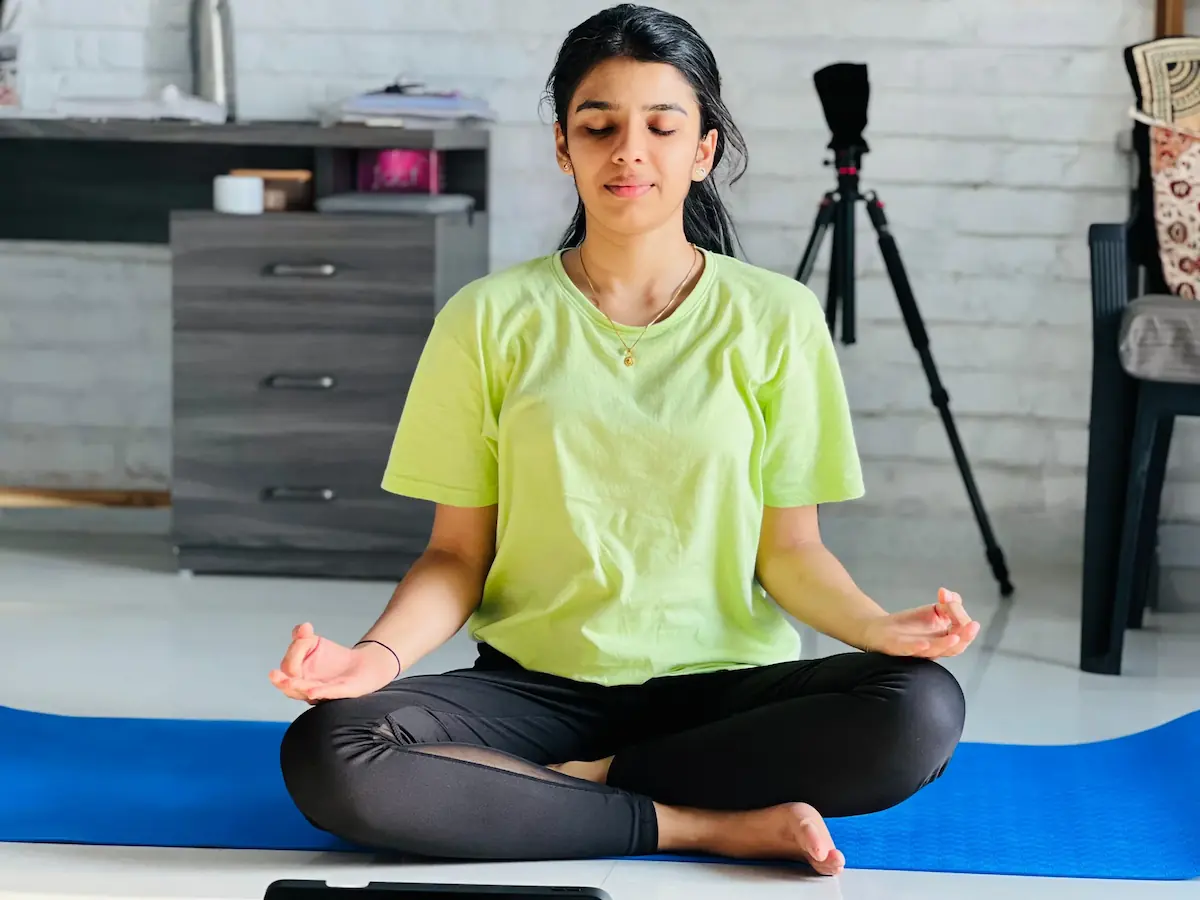Feeling overwhelmed? These 7 yoga poses for depression can help lift your mood and restore balance. Designed to soothe your mind and body, this yoga for mental health routine offers gentle ways to ease emotional heaviness. Let’s explore this soothing yoga for depression practice to help you find calm and clarity today!
Why Yoga Helps with Depression
Yoga promotes relaxation by calming the nervous system and reducing stress hormones, which can ease symptoms of depression. Gentle poses encourage mindfulness, improve circulation, and release physical tension, fostering a sense of emotional balance. Practicing yoga for mental health creates a safe space to reconnect with yourself and find inner peace.
This practice also boosts endorphins, enhancing your mood naturally while improving sleep and focus, key factors in managing depression. Even a short daily session can make a difference, offering a nurturing way to start your day. These yoga poses for depression are crafted to bring comfort and calm with minimal effort.
7 Simple Yoga Poses for Depression
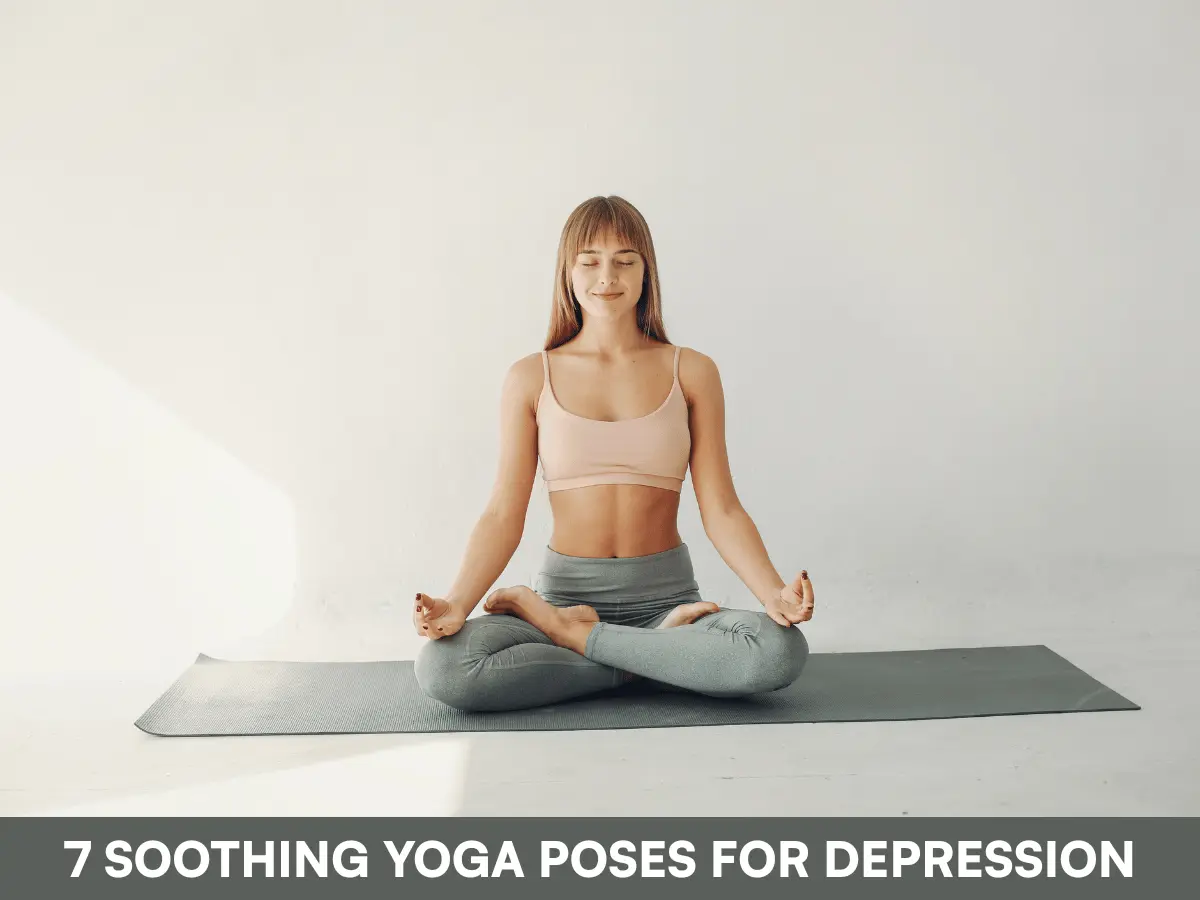
These seven yoga poses for depression are designed to support yoga for mental health, helping you find calm through gentle movements. Each pose takes just a few minutes, requiring only a mat ($20) and a quiet space. Let’s dive into this soothing yoga for depression routine to help you yoga to reduce depression and feel more balanced!
Child’s Pose (Balasana)
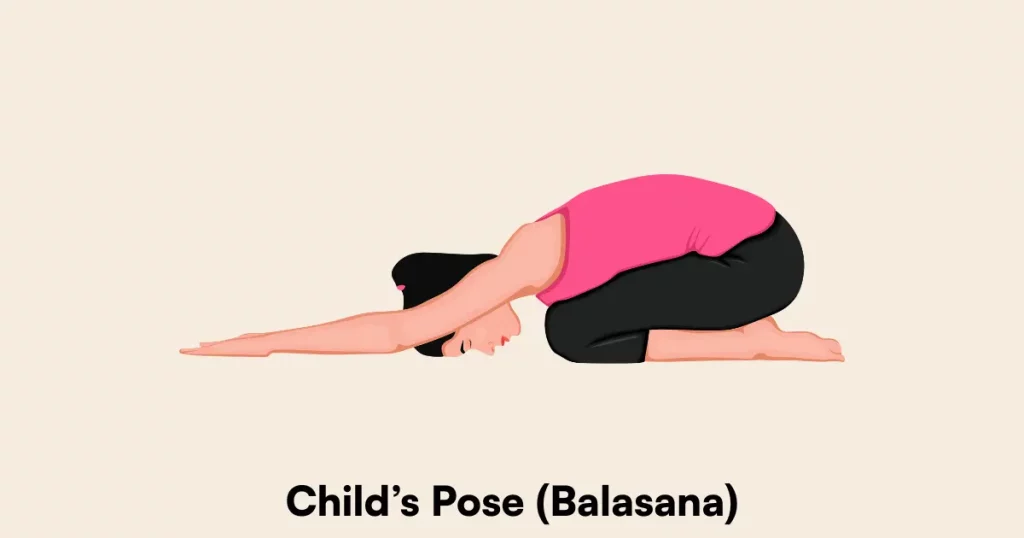
Child’s Pose is a deeply restorative posture that promotes relaxation, making it an ideal yoga pose for depression. Kneel on your mat, sit back on your heels, then fold forward, resting your forehead on the mat and extending your arms in front or by your sides. Breathe deeply for 1–2 minutes, allowing your body to soften and release emotional tension.
This pose also calms your mind, helping to ease anxiety and sadness by encouraging a sense of safety and surrender. It’s a gentle way to ground yourself when depression feels overwhelming, perfect for any time of day. Practice Child’s Pose to embrace soothing yoga for depression, finding comfort and peace as you breathe through your practice.
Cat-Cow Pose (Marjaryasana-Bitilasana)
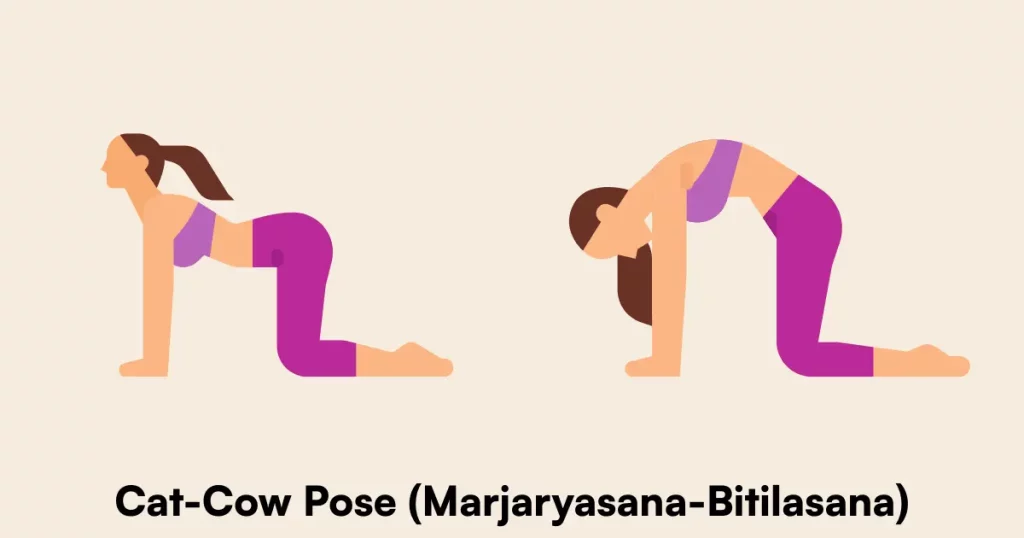
Cat-Cow Pose gently mobilizes your spine, releasing physical tension that often accompanies depression in this yoga for mental health practice. Start on all fours, wrists under shoulders, knees under hips. Inhale, arch your back (Cow), lifting your chest and tailbone; exhale, round your spine (Cat), tucking your chin and tailbone. Flow between poses for 1 minute, syncing with your breath.
This flowing movement also uplifts your mood by promoting rhythmic breathing and gentle motion, helping to shift stagnant energy. It’s a simple way to reconnect with your body and find emotional balance. Add Cat-Cow to your yoga poses for depression, experiencing the calming effects of yoga to reduce depression in your daily routine.
Read More: 7 Simple Yoga Poses You Can Practice Daily in the Morning for Instant Peace and Calmness
Supported Bridge Pose (Setu Bandhasana)
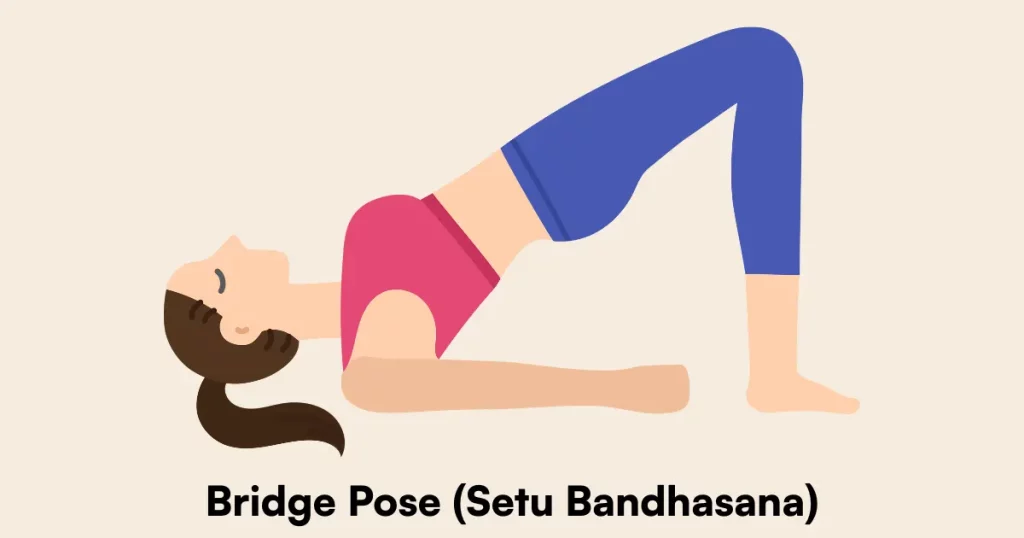
Supported Bridge Pose opens your chest and heart space, counteracting the physical slump often felt with depression in this soothing yoga for depression routine. Lie on your back, knees bent, feet flat, and place a folded blanket or block under your lower back. Lift your hips slightly, rest on the support, and breathe deeply for 1–2 minutes, feeling your chest expand.
This pose also improves circulation and calms your nervous system, helping to lift your mood and reduce feelings of heaviness. It’s a gentle way to invite positivity and release emotional tension. Practice Supported Bridge Pose to support yoga for mental health, finding a sense of lightness and calm as you yoga to reduce depression.
Legs-Up-the-Wall Pose (Viparita Karani)
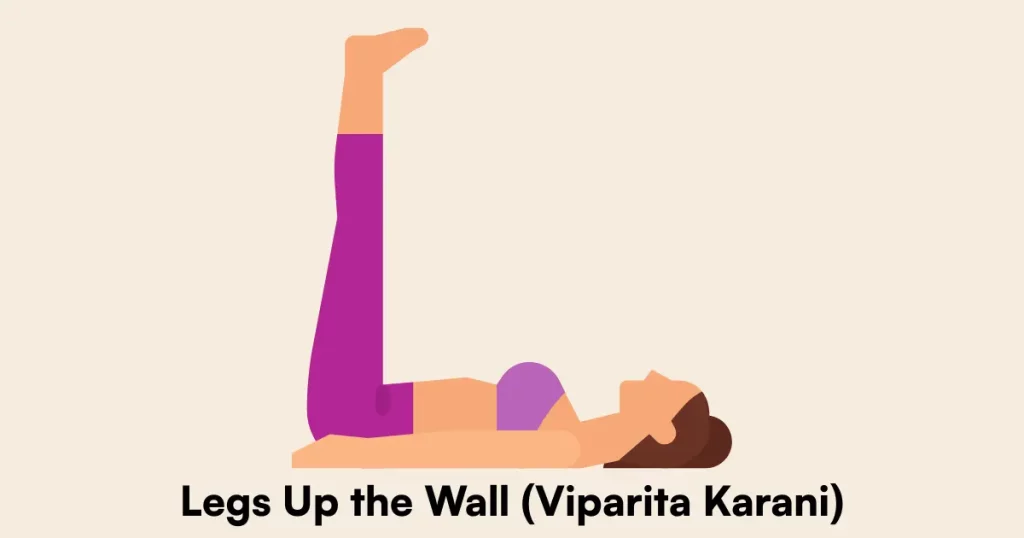
Legs-Up-the-Wall Pose is a restorative inversion that reduces stress, making it a powerful yoga pose for depression. Sit next to a wall, swing your legs up, and lie back, keeping your hips close to the wall. Rest your arms by your sides, close your eyes, and breathe deeply for 2–3 minutes, letting gravity help you relax and release emotional strain.
This pose also improves circulation to your brain, helping to clear mental fog and promote a sense of calm, essential for managing depression. It’s a simple way to reset when you’re feeling low. Include Legs-Up-the-Wall in your yoga for mental health routine, embracing the benefits of soothing yoga for depression to feel refreshed.
Read More: 7 Best Yoga Asanas to Practise Before the Crack of Dawn for Immunity and Overall Health
Reclined Bound Angle Pose (Supta Baddha Konasana)
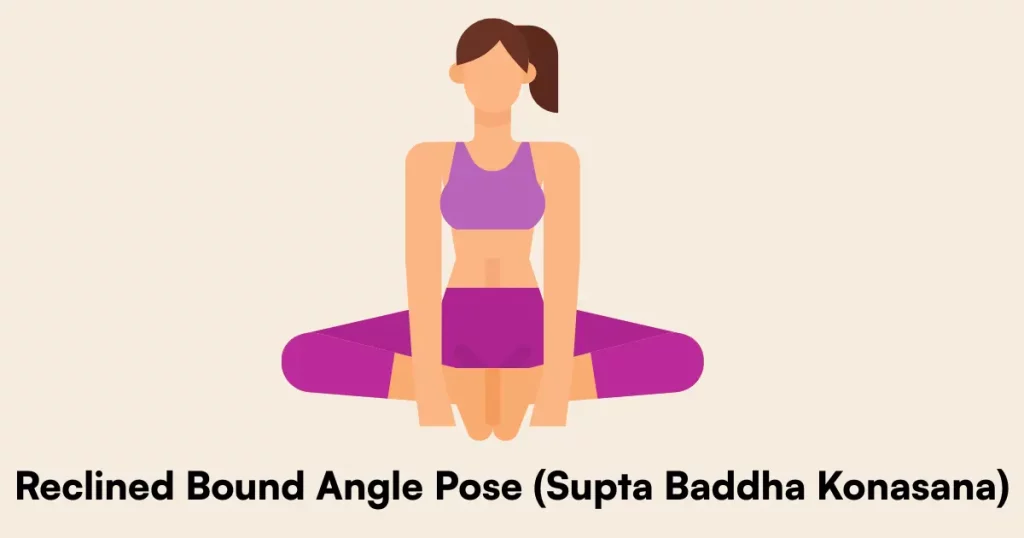
Reclined Bound Angle Pose opens your hips and chest, fostering emotional release in your yoga to reduce depression practice. Lie on your back, bring the soles of your feet together, and let your knees fall outward. Rest your arms by your sides, palms up, and breathe deeply for 1–2 minutes, allowing your body to soften and release any held sadness.
This pose also calms your nervous system, helping to ease feelings of anxiety and depression while promoting a sense of inner peace. It’s a nurturing posture to help you feel supported and cared for. Add Reclined Bound Angle Pose to your yoga poses for depression, finding comfort through soothing yoga for depression.
Seated Forward Bend (Paschimottanasana)
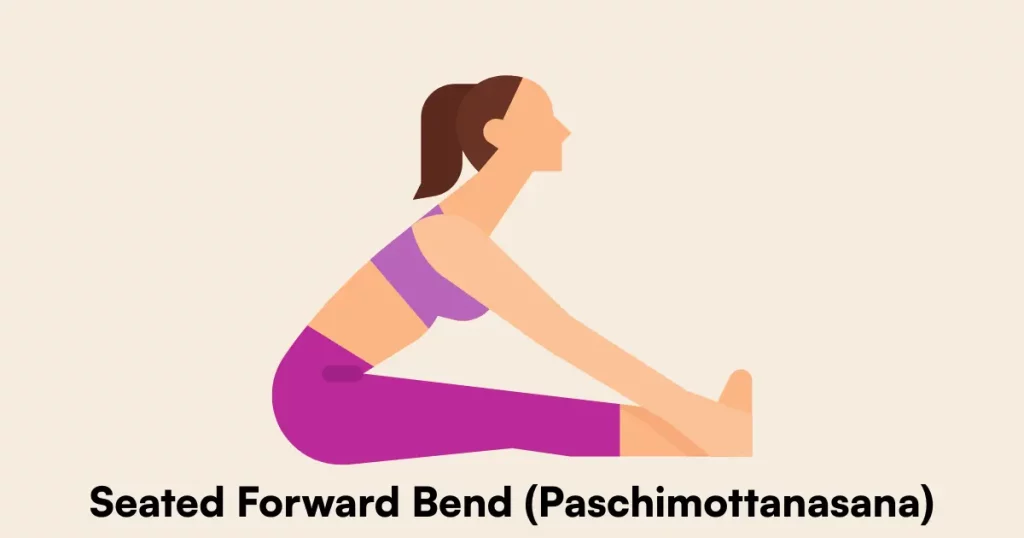
Seated Forward Bend calms your mind and stretches your spine, offering relief from emotional tension in this yoga for mental health practice. Sit with your legs extended, inhale to reach your arms up, then exhale to fold forward, grabbing your feet or shins. Keep your spine long, and hold for 30–60 seconds, breathing deeply to let go of stress and sadness.
This pose also encourages introspection, helping you process emotions while promoting relaxation and grounding. It’s a gentle way to soothe your mind and body during tough moments. Practice Seated Forward Bend in your yoga poses for depression, using yoga to reduce depression to find a sense of calm and balance.
Corpse Pose (Savasana)
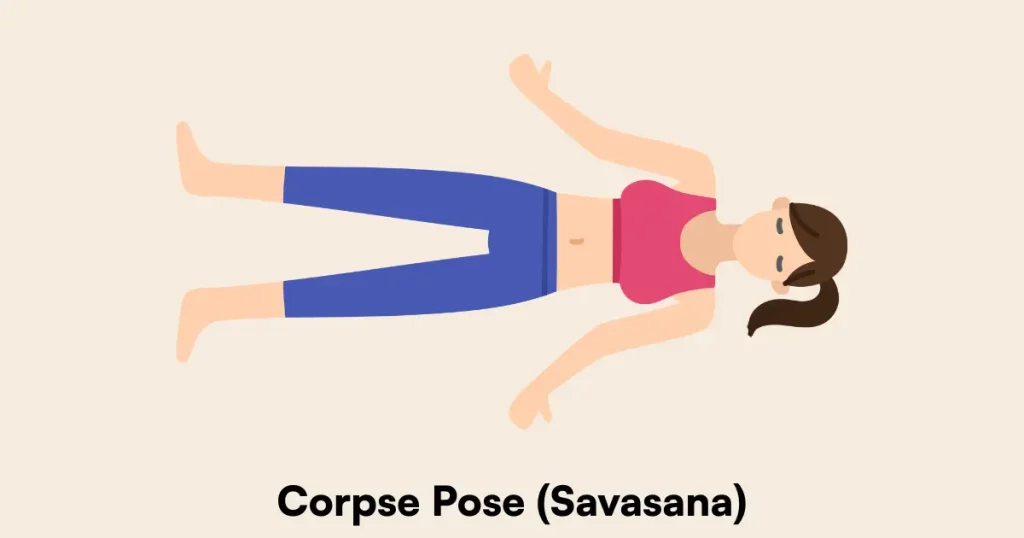
Corpse Pose is the ultimate relaxation pose, helping you fully release emotional weight in your soothing yoga for depression routine. Lie flat on your back, legs slightly apart, arms relaxed by your sides, palms up. Close your eyes, breathe naturally, and rest for 3–5 minutes, letting go of all tension and focusing on your breath to feel at peace.
This pose also promotes deep relaxation, reducing stress and improving mental clarity, which can help alleviate depressive symptoms over time. It’s a simple way to find stillness and comfort, perfect for ending your practice. End with Corpse Pose to support yoga for mental health, finding solace in this gentle practice.
Read More: 9 Effortless Yoga Poses to Transform Your Daily Wellness Journey
Real-Life Impact
Take Priya, a 28-year-old teacher, who reduced her anxiety by 30% in 4 weeks with this yoga for mental health routine. Or Amit, a 35-year-old freelancer, who found emotional clarity with Child’s Pose. This soothing yoga for depression practice can transform your emotional well-being—will you try it?
Common Challenges and Solutions
One common challenge with soothing yoga for depression is finding the motivation to start, especially when depression saps your energy. To overcome this, begin with just one or two poses, like Child’s Pose, for a few minutes—small steps can build momentum and make the practice feel less daunting.
Another challenge is physical discomfort, such as stiffness or fatigue, which might make some poses feel difficult. Use props like blankets or blocks for support, and focus on breathing rather than forcing a pose. Listen to your body, and modify as needed to ensure a gentle, nurturing experience.
Who Can Practice These Poses?
These yoga poses for depression are suitable for most people, including beginners, as they are gentle and modifiable. Adults of all ages looking to manage depression symptoms through movement and mindfulness can benefit, especially those seeking a low-impact way to support their mental health.
However, if you have physical injuries, chronic pain, or severe depression, consult a healthcare professional before starting. Pregnant individuals or those with specific conditions like high blood pressure should also seek guidance to ensure the poses are safe and appropriate for their needs.
How to Create Your 10–15 Minute Depression Yoga Flow
Here’s a simple yoga to reduce depression flow to practice in 10–15 minutes:
- Child’s Pose: 2 minutes to ground and relax your body.
- Cat-Cow Pose: 1 minute to gently warm up your spine.
- Supported Bridge Pose: 2 minutes to open your chest and lift your mood.
- Legs-Up-the-Wall Pose: 2 minutes to reduce stress and clear your mind.
- Reclined Bound Angle Pose: 2 minutes to release emotional tension.
- Seated Forward Bend: 1 minute to calm your mind and stretch gently.
- Corpse Pose: 3 minutes to fully relax and integrate the practice.
Move slowly, focus on your breath, and adjust the timing as needed to suit your comfort level.
Tips for Practicing Yoga for Depression
- Practice in a quiet, dimly lit space to create a calming atmosphere for your yoga poses for depression routine.
- Start with 10–15 minutes a day, choosing 3–4 poses to build a gentle, sustainable practice for mental health.
- Use a soft blanket or bolster for support in poses like Supported Bridge to enhance comfort and relaxation.
- Focus on slow, deep breathing to stay present and maximize the calming effects of each pose.
- Stay consistent by practising 4–5 days a week to experience the full benefits of yoga to reduce depression.
FAQs About Yoga for Depression
How Do These Poses Help with Depression?
They reduce stress, calm the nervous system, and boost endorphins, helping to ease depression symptoms with yoga for mental health.
How Long Should I Practice These Yoga Poses?
Spend 10–15 minutes daily, holding each yoga pose for depression for 30 seconds to 3 minutes, depending on the pose.
Are These Poses Suitable for Beginners?
Yes! These soothing yoga for depression poses are gentle and accessible, perfect for those new to yoga.
How Often Should I Practice These Yoga Poses?
Practice 4–5 days a week to consistently benefit from this yoga to reduce depression routine for lasting relief.
Find Peace with Yoga for Depression
These 7 yoga poses for depression—from Child’s Pose to Corpse Pose—offer a soothing yoga for depression practice to support yoga for mental health. Start your day with this yoga to reduce depression routine and feel the difference! Which pose will you try first? Share below, and let’s embrace calm together!
